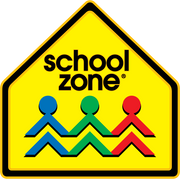Salt and pepper. Knife and fork. Bread and butter. Without “both” in these pairs something important is missing, right? Ditto for print and digital learning. They work together to build the full set of skills kids need to succeed.
The importance of digital can neither be denied nor minimized. “Screen time” is here to stay. It’s woven into the fabric of our lives, and most kids today grow up with cell phones, tablets, and remote controls in hand.
In and of itself, that’s not bad. But mounting research suggests that more and more kids are not developing the fine motor skills needed for everyday tasks. Fingers are for more than keyboarding/keypadding! And developing fine motor skills is far and away much more than learning to hold a pencil correctly—though that IS still important.
Kids need to get a grip (on pencils)
A 2018 article in The Guardian, by Amelia Hill, titled, "Children Struggle to Hold Pencils Due to Too Much Tech, Doctors Say," reports that “Children are increasingly finding it hard to hold pens and pencils due to an excessive use of technology,” according to UK pediatric specialists. Hill quotes Sally Payne, head pediatric occupational therapist at the Heart of England Foundation NHS Trust, who says, “Children are not coming into school with the hand strength and dexterity they had 10 years ago.”
The article includes illustrations of incorrect pencil grip and the desired “dynamic tripod” grip. It also quotes Barbie Clarke, child psychotherapist and founder of the Family Kids and Youth research agency, who says that nursery schools (the equivalent of U.S. preschools) are aware of this, saying that their team goes into a lot of schools “and have never gone into one, even one which has embraced teaching through technology, which isn’t using pens alongside the tablets and iPads.”
Find tools for cutting it up, writing it out
As a great example of how digital and non can work together, Anywhere Teacher, School Zone’s online learning program, actually has a video for kids that teaches correct pencil grip! But the importance of finger strength and dexterity extends beyond writing.

We read, think, and definitely write and use our hands differently online than on paper or by using manipulatives, such as blocks or paper that is cut and folded.

The Kohl's Building Blocks/Penfield Children's Center website, in "The Importance of Fine Motor Skill Development," notes that “Toys, clothing fasteners, safe scissors, and play dough are all tactile examples of practices that facilitate fine motor development.” The website adds, “Even doing age appropriate tasks in the kitchen are great ways to help build fine motor skills.”
Anywhere Teacher also has a “How to Use Scissors” video! Plus, putting kids on the Preschool, Kindergarten, or First Grade Learning Paths available with a subscription to Anywhere Teacher, comes with suggestions for complementary School Zone print products at each level. They also get a Fine Motor Skills print workbook delivered right to their front door, which includes cut-and-paste and cut-and-fold activities.

Finger counting produces more than a number
A 2018 Developmental Science article titled, "Counting on Fine Motor Skills: Links Between Preschool Finger Dexterity and Numerical Skills," reports on research by Fischer, Suggate, Schmirl, and Stoeger. It examines the importance of little ones using fingers as they learn to count (e.g. “finger counting”) and whether finger dexterity affects that ability. The researchers conclude, “Specifically, our data support the idea that children with greater FMS [fine motor skills] might not only be more proficient in using their fingers for counting procedures, but this increased proficiency might further their conceptual understanding of counting.”
A wide range of fun products can both get kids excited about learning and making things while also building hand and finger strength and dexterity. For example with this Cut & Paste Preschool Workbook,

kids practice scissor skills and other important basics such as story order, counting, matching, and beginning sounds. It’s easy! Cut out the images in the back of the book and stick them on the corresponding pages to complete the exercise. Plus, 68 colorful reward stickers add to the adventure.
Hold on to things and move them around
Kids do love stickers, they are great manipulatives for sharpening fine motor skills and eye-hand coordination, and this Preschool Stickers Workbook

is just right. It introduces pre-writing skills, the alphabet, numbers, colors, shapes, and more. Kids can write, wipe away, and redo the activities in the book over and over again. Follow the directional arrows through the pathways and also to make uppercase and lowercase letters.

This Fun and Games Preschool Workbook gives lots of fine motor skills practice as it also helps little ones learn super fun facts and stretch their imagination as they explore creative, colorful activities such as Prehistoric Egg Hunt, Crustacean Elation, River Life Cutouts and Orangutan Hang Time. They can even learn to draw ducks and dragonflies and put them on a pond!
The best way to get kids ready for tomorrow is to bring together today, the full range of skills and abilities they will call into play for the rest of their lives.










